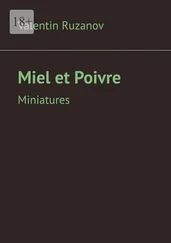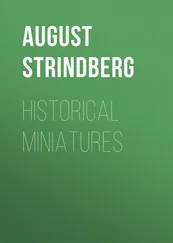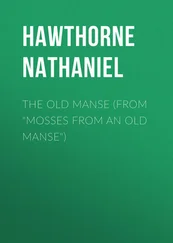Joshua Foster - Chats on Old Miniatures
Здесь есть возможность читать онлайн «Joshua Foster - Chats on Old Miniatures» — ознакомительный отрывок электронной книги совершенно бесплатно, а после прочтения отрывка купить полную версию. В некоторых случаях можно слушать аудио, скачать через торрент в формате fb2 и присутствует краткое содержание. Жанр: foreign_antique, foreign_prose, на английском языке. Описание произведения, (предисловие) а так же отзывы посетителей доступны на портале библиотеки ЛибКат.
- Название:Chats on Old Miniatures
- Автор:
- Жанр:
- Год:неизвестен
- ISBN:нет данных
- Рейтинг книги:3 / 5. Голосов: 1
-
Избранное:Добавить в избранное
- Отзывы:
-
Ваша оценка:
- 60
- 1
- 2
- 3
- 4
- 5
Chats on Old Miniatures: краткое содержание, описание и аннотация
Предлагаем к чтению аннотацию, описание, краткое содержание или предисловие (зависит от того, что написал сам автор книги «Chats on Old Miniatures»). Если вы не нашли необходимую информацию о книге — напишите в комментариях, мы постараемся отыскать её.
Chats on Old Miniatures — читать онлайн ознакомительный отрывок
Ниже представлен текст книги, разбитый по страницам. Система сохранения места последней прочитанной страницы, позволяет с удобством читать онлайн бесплатно книгу «Chats on Old Miniatures», без необходимости каждый раз заново искать на чём Вы остановились. Поставьте закладку, и сможете в любой момент перейти на страницу, на которой закончили чтение.
Интервал:
Закладка:
The former has been described by M. Lebarte as being made in the following manner: "The plate of metal intended as a foundation was first provided with a little rim to retain the enamel. Slender strips of gold of the same depth as the rim were then bent in short lengths and fashioned to form the outline of the pattern. These short bits were then fixed upright upon the plate. The metal outline being thus arranged, the intervening spaces were filled with the different enamels, reduced to a fine powder and moistened into a paste. The piece was then placed in the furnace, and when the fusion was complete, was withdrawn, with certain precautions that the cooling might be effected gradually. The enamel, when thoroughly cold, was ground and polished. It is easy to comprehend that the old artists must have used very pure gold and extremely fusible enamels, in order that the plate might not be injured from the action of the fire or the thin strips of metal be melted by the heat which fused the paste."
The method of preparing champlevé is as follows: "A slender line of metal shows on the surface the principal outlines of the design; but the outline, instead of being arranged in detached pieces, is formed out of a portion of the plate itself. The artist, having polished a piece of metal about a quarter of an inch thick, generally copper, traced upon it the outlines of his subject; then, with proper tools he hollowed out all the spaces to be filled with the different enamels, leaving slender lines level with the original surface to keep them distinct. The vitreous matter, either dry or reduced to a paste, was then introduced into the cavities, and fusion was effected by the same process as in the cloisonné enamels. After the piece had become cold it was polished, and the exposed lines of copper having been gilded, it was returned to the fire. The gilding only required a moderate temperature, not high enough to injure the incrustations of enamel."
Byzantium, as I have said, was a great seat of the cloisonné process, and the celebrated "Pala d'oro," a magnificent altar front now preserved at St. Mark's, Venice, was made at Constantinople about the year 1100. In champlevé enamelling, although the art was practised in the Rhenish provinces of Germany, it was at Limoges, in France, that the finest work was done, and in the thirteenth century opus Lemoviticum was in high favour. A century later, when the city was sacked by the troops of Edward the Black Prince, the manufacture received a great check. But with the Renaissance came a renewed demand for enamels, which were used in combination with articles of domestic utility, and in the reign of Francis the First the enamellers of Limoges, among whom Suzanne de Court, Laudin, Jehan Courtois, and Pierre Reymond are well known, produced decorative works of the most costly and beautiful nature. Whole families devoted themselves to the art, and their traditions were handed on from generation to generation. But perhaps the most famous name in connection with this French work is that of Léonard Limousin, and three others, namely, Jean, Joseph, and François, of the same family.
Léonard Limousin, who was appointed painter to the king, François I., has expressed in numerous pieces which have come from his hand the very spirit of the Renaissance, partly devotional and still more strongly classical and sensuous in feeling and treatment. Old Limoges enamel, as we all know, is extremely valuable; single pieces from the Hamilton Palace Collection were sold at Christie's in the celebrated sale for something like £2,000 apiece.
The subject is far too wide to be treated exhaustively in this book, but at the Victoria and Albert Museum examples will be found of the various styles, and the varied uses to which they were applied. The British Museum of late years has been enriched by what is known as the Waddesdon Collection, bequeathed by the late Baron Ferdinand de Rothschild; and in Paris the Cluny Museum, and especially the Salle d'Apollon in the Louvre, are extremely rich in works of this nature.
All these collections contain portraiture in enamel, but one would hesitate to say that the portrait is the primary object in the production of these works, in which undoubtedly a decorative feeling largely predominates.
Although in the general treatment they were feeling their way to a larger palette, no attempt seems to have been made by these earlier artists to get anything approaching reality in the flesh tones; they were left a uniform cold white. Until one has got a little used to this absence of colour, and the metallic hardness which the use of oxide of tin in the paste of the enamel gave rise to, and until one recognises that it is the conventional mode of treating them, the pallor of the faces, contrasted, as it generally is, with a deep blue, or sometimes shining black background, is somewhat repellent.
Take, for example, the large medallion of the Cardinal de Lorraine, Charles de Guise, uncle to Mary Stuart, a piece which cost the nation £2,000, and may be seen at Kensington. It represents the Cardinal in scarlet robes and a biretta. The head, fully seven inches long, is painted upon a deep blue ground; his hair is black, the eyes are blue, and the effect of the whole is, it must be admitted, extremely hard, in spite of the distinguished name its author, Léonard Limousin, bears in the ranks of medieval enamellers. The work is as different as possible from the exquisite minuteness which characterises other enamel painters, like Petitot, for instance, to whom we shall come by and by.
The same lack of modelling and of half-tones may be observed in the portraits in the Waddesdon room at the British Museum, to which reference has already been made. See, for example, the large panel, 9 inches by 12, or thereabouts, of Catherine de Lorraine, Duchess de Montpensier. This lady wears her hair in a golden and jewelled net; her open collar is laced with pearls; this piece is also signed Limousin, and may be regarded as a typical sixteenth-century portrait.
The step forward which was to elevate the art of painting in enamel to the highest possible pitch of technical execution, of artistic treatment and minute finish, was taken by Jean Petitot, a Genevan, born in 1609. Apart from the wonderful skill of the artist, who, in respect of technique, must be considered absolutely unique, the means by which such beautiful, delicate, and minute effects could be produced in so difficult an art as that of fusing colours would be in itself an interesting study.
Probably it is to Jean Toutin, an obscure French goldsmith, who lived at Châteaudun, and, assisted by Isaac Gribelin, a painter in pastels, and doubtless by his son, Henri Toutin, of Blois, produced, about 1632, a variety of colours which he found could be laid upon a thin ground of white enamel, and passed through a furnace with scarcely any change of tint, that Petitot owed the richness of his palette. From Toutin, and from Pierre Bordier, another French goldsmith, to whom he was apprenticed, Petitot gained the insight into enamelling which bore such rich fruit when he came to this country in his twenty-eighth year, attracted, there is little doubt, by the reputation then enjoyed by our king, Charles I., as a patron of art.
The English monarch had in his service as physician at that time a certain Sir Turquet de Mayerne, himself a Genevan and a chemist of European celebrity. He and Petitot pursued scientific research into the nature and properties of the metallic oxides with such ardour and success that the miniature painter's palette became greatly enriched, and he was able to express all the nuances of flesh colouring in a way which had never before been approached and, I may add, has never been surpassed.
When one realises the extraordinary minuteness and exquisite finish of a work of Petitot, and the difficulties of the method – by which I mean the risks attending the firing – it is almost incredible that such success could be attained; but probably there were large numbers of failures of which the world knows nothing.
Читать дальшеИнтервал:
Закладка:
Похожие книги на «Chats on Old Miniatures»
Представляем Вашему вниманию похожие книги на «Chats on Old Miniatures» списком для выбора. Мы отобрали схожую по названию и смыслу литературу в надежде предоставить читателям больше вариантов отыскать новые, интересные, ещё непрочитанные произведения.
Обсуждение, отзывы о книге «Chats on Old Miniatures» и просто собственные мнения читателей. Оставьте ваши комментарии, напишите, что Вы думаете о произведении, его смысле или главных героях. Укажите что конкретно понравилось, а что нет, и почему Вы так считаете.












